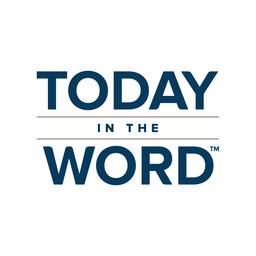Today in the Word Devotional
Today in the Word is a daily audio devotional available via podcast. Today in the Word features solid biblical content and study that models the missi…The Christmas carol “We Three Kings” is supposed to tell the story that Matthew narrates in the Bible. The carol sings of three kings who traveled over “field and fountain, moor and mountain” to pay homage to the newly born King of the Jews. However, the biblical account is a bit different. Matthew calls them Magi, does not give their number, and merely says they came to Jerusalem “from the east” (v. 1).
These mysterious individuals were probably from Babylon. They had observed some astronomical phenomenon that signaled a birth in the royal line of the Jews. The language used in their explanation to King Herod indicates that they interpreted this heavenly sign to point to the birth of someone who was more than an earthly king. They did not come merely to congratulate the royal family. They came to “worship” (vv. 2, 11).
Scholars are unsure what the Magi saw. The Magi called it a “star,” but this term was employed in their day to describe several different phenomena. Whatever this was, it moved during their journey, going “ahead of them” as they traveled and stopped “over the place where the child was” (v. 9). One explanation given by New Testament scholar Collin R. Nicholl is that it was a comet. Others think it was a conjunction of planets or a wholly supernatural phenomenon. God guided the Magi because the star led them directly to the child. This is especially interesting, given that it first did so by way of Jerusalem. Their visit to Jerusalem was not a miscalculation. Nor was it an accident. God used these Gentile strangers to inform Herod of the Messiah’s birth. He, in turn, reported the news to the chief priests and teachers of the Law (v. 4). This incident anticipates the forward path of the gospel. But we also see storm clouds gathering on the horizon.
Matthew calls them the Magi. But just who were they? You're listening to today in the Word from Moody Bible Institute. I'm John Gager with today's devotional. These mysterious Magi were probably from Babylon. They had observed some astronomical phenomenon that signaled a birth in the royal line of the Jews, someone who was more than an earthly king. Today, in the word we read in Matthew two verse ten. When they saw the star, they were overjoyed. They did not come merely to congratulate the royal family. They came to worship. Scholars are unsure what the Magi saw. The Magi called it a star, but this term was employed in their day to describe several different phenomena. Well, whatever this was, it moved during their journey, going ahead of them as they traveled and stopping over the place where the child was. One explanation given by New Testament scholar Colin R Nichol Nicole is that it was a comet. Others think it was a conjunction of planets or a wholly supernatural phenomenon. Whatever the case, God guided the Magi because the star led them directly to the child. This is especially interesting given that it first did so by way of Jerusalem. Their visit to Jerusalem was not a miscalculation, nor was it an accident. God used these Gentile strangers to inform Herod of the Messiah's birth. He in turn reported the news to the chief priests and the teachers of the law. This incident anticipates the forward path of the gospel, but we also see storm clouds gathering on the horizon. There's more to this story as our devotional series continues, and we'll look forward to connecting again today in The Word. Our website, by the way, that you can share with your friends is today in the word.org. Again, that's today in the word.org.
 Today in the Word Devotional
Today in the Word Devotional















